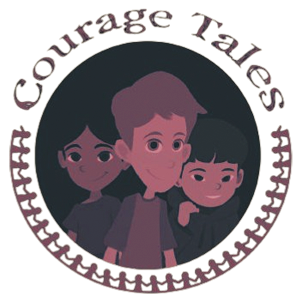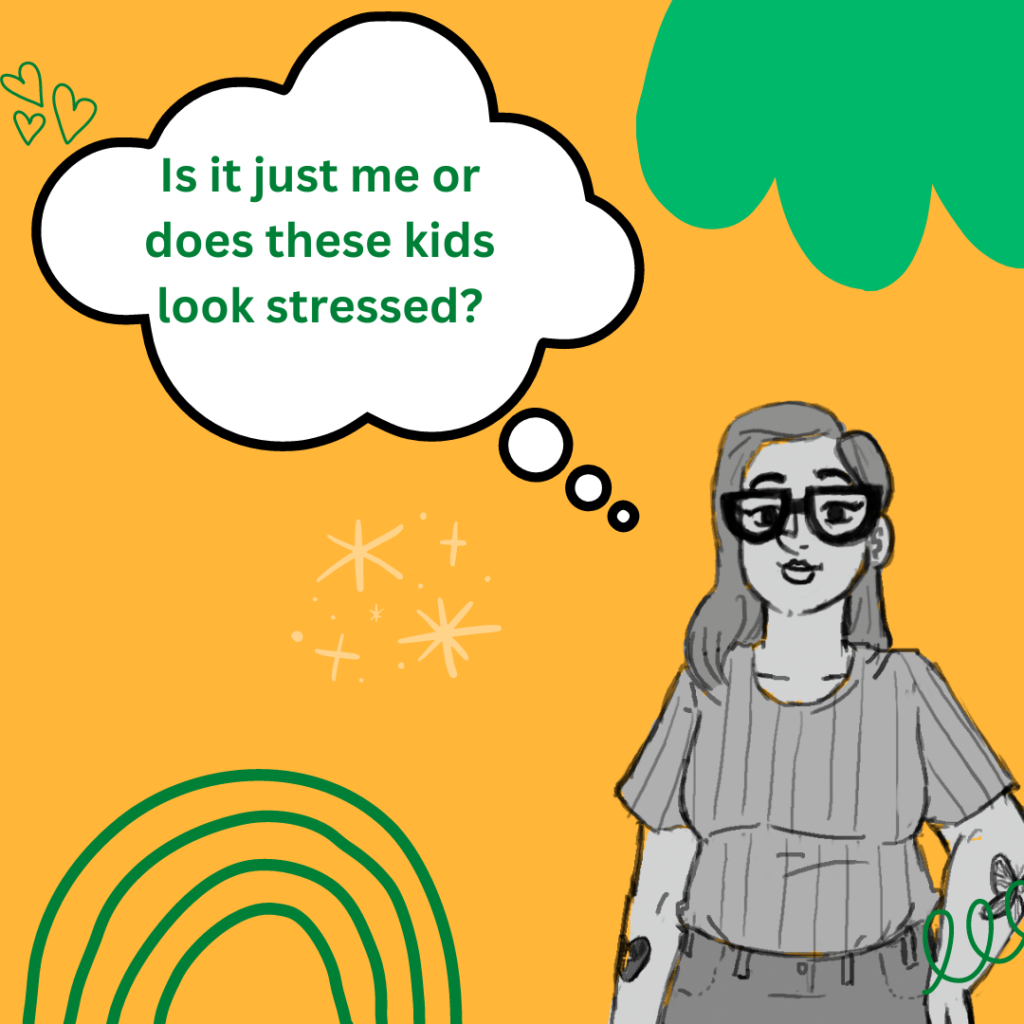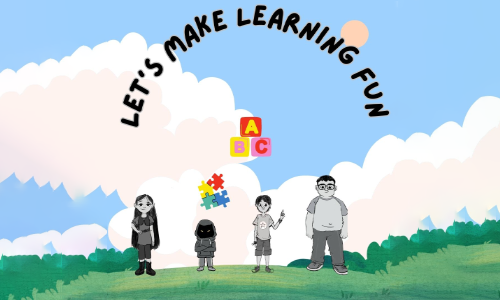A Fun Guide to Teaching Kids About the Amygdala: Activities to Spark Their Brain Curiosity and Emotional Intelligence for Kids
As a mom on a mission, I want to help my kids learn to manage their emotions. Tantrums happen all the time, parents get stressed, and every event, every trip turns into chaos. But where do you even start? Emotional intelligence feels like such a big, complex topic!
I realized that the best place to begin was with myself—learning how my own brain works helped me manage my emotions and daily struggles. Once I understood brain functions and psychology, handling my feelings (and life) became so much easier.
That’s when it clicked—if understanding the brain helped me, it could help my kids too! Teaching children how their brains work gives them the tools to manage emotions and navigate the world with confidence.
Yes, teaching your children about their brains and how emotions work can give them the tools to handle their feelings better, how to make friends, overcome challenges, how to LIVE well. It’s all about making it fun and easy for them to understand, so they can start recognizing their emotions and feel more in control.
As parents, helping kids develop emotional intelligence and understand their brain functions is essential. After some research , I decided that we will start with amygdala, a part of the brain responsible for regulating emotions like fear, excitement, and happiness.
What is the Amygdala?
It’s a small, almond-shaped part of your brain that’s always watching for important things — like your emotions, memories, and those quick reactions that happen when something surprises you.
The amygdala helps you feel everything — from nervousness to excitement. It’s also your built-in danger detector. Like when you hear a sudden crash in another room and your heart skips a beat — that’s your amygdala sending out an alert, making sure you’re aware and ready to act.
Why is the Amygdala So Important?
- Emotions Everywhere!
It’s not just about big, dramatic feelings. The amygdala is constantly active, shaping every emotion we have. The amygdala is involved in how we experience and react to those emotions. In other words, teaching about amygdala is indirectly teaching emotional intelligence to kids. - Fight or Flight!
The amygdala triggers our fight or flight response when we sense danger. Imagine you’re walking in the woods and suddenly hear rustling behind you. The amygdala goes into overdrive, sending signals to your body to either fight the danger or run away — fast! It’s what keeps us safe. It’s quick, automatic, and super important. It’s crucial to our survival. - Helps with Memories!
The amygdala also helps create strong memories connected to emotions. This is why you can remember feeling happy on your birthday or scared during a thunderstorm. It’s because the amygdala tags memories with emotional importance so we can remember how we felt in certain situations.
Why Should Parents Teach Kids About the Amygdala? – Kids brain education (and a couple of parenting hacks)
Knowing how the amygdala works can empower kids to understand and control their emotions. Here’s why it’s important to teach them about their own “emotion detective”:
- Helps Kids Recognize Emotions Early
Kids understand that their emotions are connected to the amygdala’s reactions, so they can better recognize what’s going on inside their bodies instead of blaming themselves. When they feel stressed tell them “Oh, this is your amygdala getting you ready for something — are you feeling nervous or excited?” This awareness is the first step in understanding and managing emotions. - Empower Kids to Calm Down
Teaching kids about the amygdala can help them realize they can take charge of their feelings. If the amygdala is in charge of triggering those big emotions, they can also learn how to calm it down. This is especially important when they’re feeling overwhelmed, angry, or anxious.
Parenting Hack on Calming Kids Down: Techniques like deep breathing, counting to 10, or taking a break can help them calm their amygdala and get back in control. - Boost Emotional Intelligence (EQ)
Knowing about the amygdala isn’t just about calming down — it’s also about boosting emotional intelligence! Understanding why we feel the way we do helps kids with empathy (understanding how others feel) and self-awareness (knowing their own emotions). These skills will help them build better friendships, communicate effectively, and make smart emotional decisions.
How Can You Teach Your Kids About the Amygdala? (more parenting tips on self-regulation)
Introducing your kids to the amygdala doesn’t have to be hard or boring! Besides, the brain development in children is so quick that we parents often underestimate their potential to grasp medical terms. Here are some fun and simple ways to make it engaging and easy to understand:
- Use Fun Analogies
Explain the amygdala like a superhero or alarm system. For example: “Imagine the amygdala is like a superhero who protects you when you feel scared, or gets you excited when something fun happens!
Parenting Tip on Self-Regulation: But, here’s the thing, parents – the amygdala is a bit like a double-edged sword. On one hand, it can be super helpful, like a superhero, on the other hand, it can sometimes overreact, like a fire alarm going off when there’s no fire! So tell kids both the good and the not-so-good – and how they can make it work for them! So explain to your kids: “Sometimes, the amygdala gets a little too nervous and makes your heart race, even though you’re not in any danger, like a fire alarm going off when there’s no fire!
- Use Visuals & Crafts
Get creative! Use simple drawings or crafts to show where the amygdala is in the brain. Check out the art we did with my 6 and 7-year-old using paper, markers, and brain stickers. It really doesn’t have to be complicated or expensive. Keep it simple and see if they like it, before you buy some fancy art supplies. - Storytelling
Share fun stories where the amygdala plays a role. For example, you can tell a story about a character who feels nervous before a test but uses breathing exercises to calm their amygdala down. Or if you don’t feel creative, find a book that present the brain parts in an age appropriate way. I found one great book that I can honestly recommend to you, it’ called “Your Amazing Brain” by Jessica Sinarski. Storytelling, as a mom and children’s book author is in my opinion one of the most effective strategy to teach kids about emotions and copying with big feelings.

See how we are teaching about amygdala in my home: Check Out This Educational Video
Conclusion: The Amygdala is Your Child’s Emotion Coach!
The amygdala is a small but powerful part of the brain, and understanding it can help your kids manage their emotions, make smarter decisions, and grow into emotionally intelligent individuals.
So, the next time your child feels a big emotion, you can say, “I think your amygdala is at work!” and help them understand and manage it in a healthy way.
By teaching kids about the amygdala, they can better understand why they feel certain emotions and how to regulate them, building emotional intelligence and empathy for others.
Next Steps: Dive Into Empathy and Compassion Through Storytelling! – Recommended Resources
Now that your kids understand how their amygdala works, it’s time to build on that knowledge! They already understand where emotions come from, so it’s time to explore bigger ideas like empathy and compassion—learning to understand their own feelings and care about others’ too.
If you’re looking for an extra tool to help kids develop emotional intelligence and empathy, check out this Empathy Class for Kids 6-10. It’s a great way to build on the knowledge of the amygdala and help children strengthen their emotional skills. Helping kids learn about their emotions is the first step to building empathy, resilience, and emotional intelligence! Let’s make learning fun and engaging.
Remember, the amygdala is just the beginning—let’s keep the emotional adventure going! Good luck!
Sources:
Understanding Amygdala
Emotional Regulation in Children:
- APA – Emotional Regulation
- Child Mind Institute – Helping Kids with Emotional Regulation
- Greater Good Science Center – Emotional Intelligence
- Harvard Center – Brain Development




